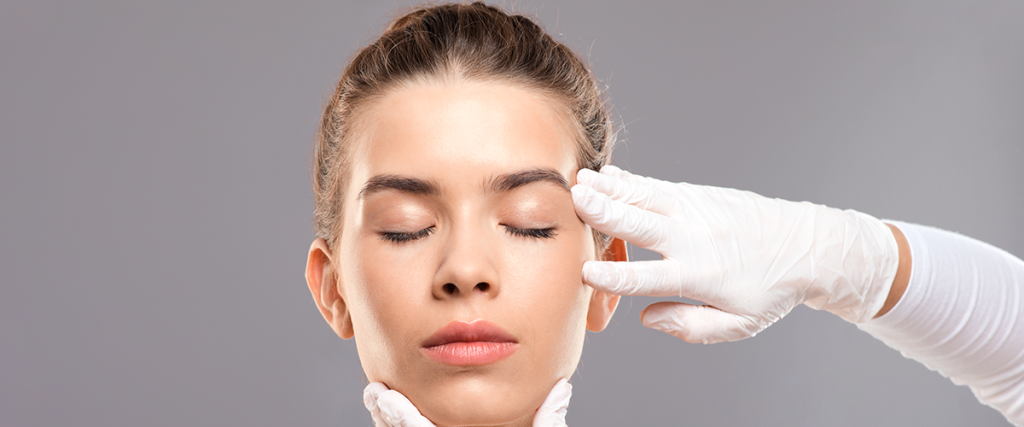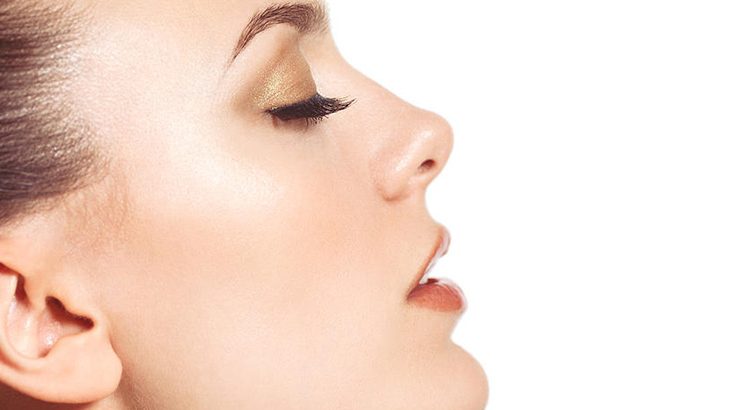Contents;
Potential Complications During Rhinoplasty Surgery

Rhinoplasty, also known as a nose job, is a surgical procedure aimed at improving the appearance and/or function of the nose. While it is a commonly performed cosmetic surgery, like any surgical procedure, there are certain risks and potential complications associated with it that patients should be aware of.
One of the potential complications during rhinoplasty surgery is infection. Infections can occur in the incision site or inside the nose, leading to swelling, pain, and possible fever. To minimize the risk of infection, surgeons take precautions such as using sterile instruments and prescribing antibiotics. However, it is important for patients to follow post-operative care instructions to further reduce the chances of infection.
Another risk of rhinoplasty surgery is excessive bleeding and hematoma formation. During the procedure, blood vessels can be damaged, leading to bleeding. In some cases, the blood can accumulate under the skin, causing a hematoma. Hematomas can increase swelling and discomfort, and may require surgical intervention to drain the accumulated blood.
| Potential Risks of Rhinoplasty Surgery: |
|---|
| Infection |
| Excessive bleeding and hematoma formation |
| Unsatisfactory aesthetic outcomes and asymmetry |
- Breathing problems and nasal obstruction
- Nasal skin problems and changes in sensation
- Psychological and emotional risks of rhinoplasty
Furthermore, unsatisfactory aesthetic outcomes and asymmetry may occur after rhinoplasty surgery. Despite the surgeon’s best efforts, there can be variations in healing, leading to asymmetry or an outcome that does not match the patient’s expectations. It is important for patients to have realistic expectations and communicate their desires clearly with the surgeon during the pre-operative consultations.
Breathing problems and nasal obstruction can also be a potential complication following rhinoplasty. Surgical techniques used to reshape the nose may inadvertently affect the nasal passages, causing breathing difficulties. Surgeons carefully assess the patient’s nasal function and take necessary steps to optimize airflow during the procedure.
Lastly, some patients may experience nasal skin problems and changes in sensation following rhinoplasty. Skin irritation, redness, or temporary numbness in the operated area can occur. These issues are usually temporary and resolve with time.
Post-Operative Risks And Side Effects

Rhinoplasty, also known as nose reshaping surgery, is a common cosmetic procedure performed to improve the appearance and function of the nose. While it can provide excellent results, it is important to understand that like any surgical procedure, rhinoplasty carries certain risks and potential side effects. In this blog post, we will discuss the post-operative risks and side effects that patients may experience after undergoing rhinoplasty.
One of the common post-operative risks of rhinoplasty is infection. During the surgery, the incisions made in the nose create a pathway for bacteria to enter. If proper care is not taken to keep the incision sites clean and free from bacteria, it can lead to infection. Symptoms of infection may include redness, swelling, warmth, and pus drainage from the incision site. If an infection occurs, it is important to seek medical attention promptly to prevent further complications.
Delayed wound healing is another post-operative risk associated with rhinoplasty. The extent of wound healing varies from person to person, and factors such as overall health, age, and the surgical technique used can influence the healing process. Some patients may experience a delay in wound healing, which can result in prolonged swelling, increased scarring, and potential asymmetry of the nose. It is important to follow all post-operative care instructions provided by the surgeon to promote proper healing.
Excessive bleeding and hematoma formation are potential side effects of rhinoplasty. Bleeding is common during and immediately after surgery, but if it becomes excessive or persists for a prolonged period, it may indicate a problem. Hematoma refers to a collection of blood outside the blood vessels, which can cause swelling and discomfort. In rare cases, a large hematoma may need to be drained to prevent further complications.
Infection And Delayed Wound Healing

When undergoing rhinoplasty surgery, there are various potential risks and complications that patients should be aware of. One of these risks is the possibility of infection and delayed wound healing. Infection can occur when bacteria enters the surgical incision site, leading to redness, swelling, and discharge. Delayed wound healing refers to a slow or impaired healing process, which can also increase the risk of infection. These complications can significantly impact the overall outcome of the rhinoplasty procedure and can even necessitate additional interventions or prolonged recovery time.
In order to minimize the risk of infection and delayed wound healing, surgeons take several precautions throughout the rhinoplasty procedure. Prior to surgery, patients are often required to undergo pre-operative testing to ensure that there are no existing infections or medical conditions that could increase the likelihood of complications. During the surgery, sterile techniques are employed to minimize the risk of contamination. Surgeons also prescribe prophylactic antibiotics to further reduce the risk of infection.
However, despite these precautions, infection and delayed wound healing can still occur. Factors that can contribute to these complications include smoking, poor blood circulation, compromised immune system, and improper wound care post-surgery. It is important for patients to follow their surgeon’s instructions for post-operative care, including cleaning the incision site regularly and applying prescribed ointments or medications. By adhering to these guidelines, patients can help promote proper wound healing and reduce the risk of infection.
In the event that infection or delayed wound healing does occur, prompt medical attention is crucial. Early detection and treatment is essential to prevent the infection from spreading and causing further complications. Depending on the severity of the infection, treatment may involve oral or intravenous antibiotics, wound debridement, or in severe cases, surgical intervention to remove infected tissue.
| Common Signs of Infection and Delayed Wound Healing: |
|---|
|
|
|
|
It is important to note that the risk of infection and delayed wound healing can vary depending on individual factors such as overall health, pre-existing medical conditions, and adherence to post-operative care instructions. Consulting with a qualified and experienced surgeon is crucial to minimize these risks and ensure a successful rhinoplasty outcome.
Excessive Bleeding And Hematoma Formation

Excessive bleeding and hematoma formation are potential risks associated with rhinoplasty. Rhinoplasty, also known as a nose job, is a surgical procedure that aims to reshape the nose for functional or aesthetic purposes. While it is generally a safe procedure, there are certain risks involved that patients should be aware of.
Bleeding is a common complication during and after rhinoplasty surgery. During the procedure, small blood vessels in the nose may be damaged, leading to bleeding. Additionally, the use of anesthesia and surgical instruments can also contribute to bleeding. Although the surgeon will take necessary precautions to minimize bleeding, it is important for patients to understand that a certain level of bleeding is expected.
In some cases, excessive bleeding may occur, leading to the formation of a hematoma. A hematoma occurs when blood accumulates under the skin, leading to swelling and discomfort. It may require additional medical intervention, such as draining the hematoma, to alleviate the symptoms. While hematoma formation is not a common complication, it is important for patients to be aware of the potential risk.
Unsatisfactory Aesthetic Outcomes And Asymmetry

Rhinoplasty, commonly known as a nose job, is a surgical procedure that aims to improve the appearance of the nose. While many individuals are satisfied with the aesthetic results of rhinoplasty, there are certain risks and complications that could lead to unsatisfactory outcomes and asymmetry.
One of the main factors that contribute to unsatisfactory aesthetic outcomes is the surgeon’s skill and expertise. A novice or inexperienced surgeon may not have the necessary knowledge and techniques to achieve the desired results. It is crucial to choose a board-certified and experienced plastic surgeon to minimize the risks associated with rhinoplasty.
Asymmetry is another potential complication of rhinoplasty. While the goal of rhinoplasty is to achieve a balanced and harmonious appearance, asymmetry can occur due to various reasons such as differences in the healing process, pre-existing facial asymmetry, or inadequate correction during surgery. In some cases, revision rhinoplasty may be required to address the asymmetry and achieve desired aesthetic outcomes.
- Risks of Rhinoplasty include:
- Unsatisfactory aesthetic outcomes
- Asymmetry in the appearance of the nose
- Revision rhinoplasty may be necessary
- Choosing an inexperienced surgeon
- Pre-existing facial asymmetry
- Insufficient correction during surgery
- Healing process variations
In order to minimize the risks of unsatisfactory aesthetic outcomes and asymmetry, it is essential to have realistic expectations and open communication with your surgeon. Prior to the procedure, discuss your goals and concerns with your surgeon, ensuring they understand your expectations clearly. Additionally, it is important to follow all post-operative instructions provided by your surgeon to optimize healing and minimize the risk of complications.
Rhinoplasty is a complex procedure that requires expertise and precision. While unsatisfactory aesthetic outcomes and asymmetry can be potential risks, choosing a skilled surgeon and maintaining a clear line of communication can greatly reduce these risks. By understanding the potential complications and being actively involved in the process, you can increase the likelihood of achieving the desired aesthetic outcomes and minimizing any asymmetry that may arise.
| Key Risks | Solutions |
|---|---|
| Unsatisfactory aesthetic outcomes | Choose an experienced surgeon |
| Asymmetry | Revision rhinoplasty if necessary |
| Choosing an inexperienced surgeon | Opt for a board-certified and experienced plastic surgeon |
| Pre-existing facial asymmetry | Discuss with your surgeon prior to the procedure |
| Insufficient correction during surgery | Follow post-operative instructions for optimal healing |
| Healing process variations | Maintain open communication with your surgeon |
Breathing Problems And Nasal Obstruction

Rhinoplasty, also known as nose job surgery, is a highly popular cosmetic procedure that aims to enhance the appearance of the nose. While the majority of rhinoplasty surgeries are successful and result in improved aesthetic outcomes, there are some risks and potential complications associated with this procedure. One of these risks is the development of breathing problems and nasal obstruction.
During rhinoplasty, the nasal passages and airways can be inadvertently altered or obstructed, leading to difficulty in breathing. This can occur due to several reasons, including structural changes to the nose, swelling, or improper healing. In some cases, the surgeon may need to manipulate the internal structures of the nose, such as the septum, nasal bones, and cartilage, which can impact the airflow.
As a result of these alterations, patients may experience symptoms such as nasal congestion, difficulty in breathing through the nose, snoring, or even sleep apnea. Breathing problems and nasal obstruction can be both physically uncomfortable and emotionally distressing for the patients. It is crucial for individuals considering rhinoplasty to be aware of these potential risks and discuss them thoroughly with their surgeon before undergoing the procedure.
Nasal Skin Problems And Changes In Sensation

One of the potential risks associated with rhinoplasty is the development of nasal skin problems and changes in sensation. Rhinoplasty, or nose reshaping surgery, involves altering the structure of the nose to improve its appearance or function. However, the manipulation of the skin and underlying tissues during the procedure can sometimes lead to complications in the healing process.
One common nasal skin problem that may occur after rhinoplasty is skin necrosis. This happens when the blood supply to a particular area of the nasal skin is compromised, resulting in tissue death. Factors such as excessive tension, trauma, or poor blood circulation can contribute to this complication. Skin necrosis can lead to visible changes in the skin, such as discoloration, scarring, or even an open wound. It is important for patients to follow their surgeon’s post-operative instructions carefully to minimize the risk of developing this issue.
Changes in sensation are also commonly reported after rhinoplasty. This can include altered or diminished sensitivity in the nasal area. The nerves responsible for providing sensation to the nose can be affected during surgery, leading to temporary or permanent changes in feeling. Some patients may experience numbness, tingling, or a loss of sensation in certain parts of the nose. Fortunately, in most cases, these changes gradually improve over time as the nerves regenerate and heal.
| Potential Risks |
|---|
| Skin Necrosis |
| Changes in Sensation |
In addition to skin necrosis and changes in sensation, other potential risks associated with rhinoplasty include infection, excessive bleeding, unsatisfactory aesthetic outcomes, breathing problems, and psychological and emotional risks. It is important for patients to have a thorough understanding of the possible complications and to have open communication with their surgeon. By selecting a qualified and experienced surgeon, following post-operative instructions diligently, and maintaining realistic expectations, individuals can minimize the risks and increase the likelihood of a successful rhinoplasty outcome.
Psychological And Emotional Risks Of Rhinoplasty

Undergoing rhinoplasty, or nose surgery, is a significant decision that can have both physical and psychological impacts. While many individuals focus on the physical results of the surgery, it is important to consider the psychological and emotional risks as well. These risks can vary from person to person, so it is crucial to have a thorough understanding of them before pursuing rhinoplasty.
One of the psychological risks of rhinoplasty is body image dissatisfaction. Individuals may have unrealistic expectations about the results of the surgery, leading to disappointment if their desired outcome is not achieved. This can result in lowered self-esteem and negative body image. It is essential for individuals considering rhinoplasty to have a realistic understanding of what can be achieved through the procedure.
Another psychological risk is the potential for post-operative depression or anxiety. The emotional stress of undergoing surgery and the anticipation of the results can contribute to these feelings. It is not uncommon for individuals to experience a temporary decrease in mood or anxiety during the recovery period. It is important to have a support system in place to help cope with these emotional challenges.
